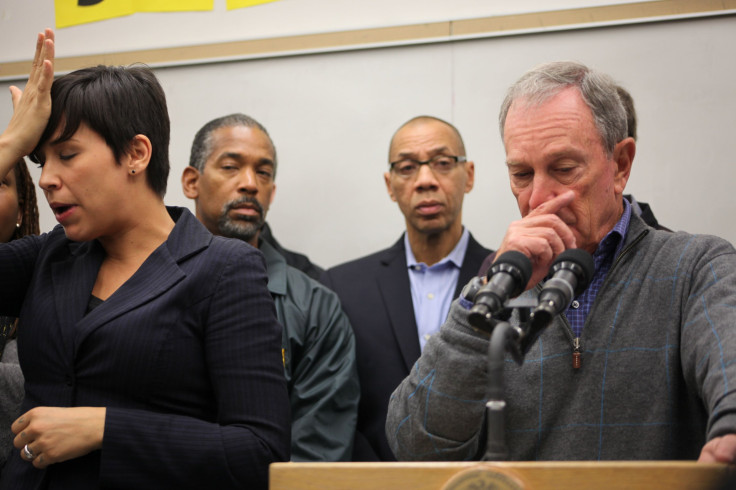5 Facts Showing Just How Scared of Sandy New York Is

New York Mayor Michael R. Bloomberg said Sunday his "greatest fear" ahead of the arrival of Hurricane Sandy to the vicinity of America's financial and cultural capital is that a decision by someone in a flood-prone area to stay home will wind up costing the life of a first responder on the city payroll.
"You can't stop an emergency from occurring," Bloomberg said at a press conference inside a shelter in Manhattan's Chinatown, "but you can stop from creating an emergency."
In spite of the fact fear was only addressed once, it was a palpable undertone at the press conference, which began with the mayor noting, "This is a serious and dangerous storm."
Actions, of course, speak louder than words. Here are five of them that show just how afraid New York officials are of what's to come.
1. They closed the subway a full 17 hours before the first dangerous part of the storm is expected to be here. In a decision made by New York Gov. Andrew M. Cuomo, the vast New York subway system began to close at 7 p.m. EDT. Buses continued to run another couple of hours. According to local officials, they don't expect the coming storm to bring al that much rain, but they are afraid high winds and a massive storm surge will flood low-lying areas of the city. Even then, they admit the earliest that threat could materialize is around noon Monday.
2. They knocked on tens of thousands of doors within the span of a few hours Sunday telling people to evacuate. According to Bloomberg, 25,000 people live in housing projects in the most flood-prone Zone A of New York. Most of these people are in southern Brooklyn near Coney Island and on the Lower East Side of Manhattan -- and many are Chinese or Hispanic residents who may not speak English. But that did not deter representatives of the New York City Housing Authority from "knocking on every door" in the span of a few hours Sunday telling people it was best for them to move to a shelter. Apparently, just a comparative few were responsive to the message. In the shelter where the mayor held his press conference, only 90 people had shown up to what, by 5 p.m., was a mostly empty auditorium. But that didn't mean the city wasn't trying with all its might.
3. They are making it really unattractive for people to stay in areas likely to flood. At an earlier press conference, Bloomberg said people would not be arrested or forced from their homes if they refused to follow the "mandatory" evacuation order. But at least for people who live in housing projects, the mayor showed just how serious he was about his mandate by shutting off their hot water, heating, and elevators. The move had little precedent: It was not made during similar preparations for Hurricane Irenelast year.
4. They were putting pressure even on Wall Street to take storm preparations more seriously. Even though the New York Stock Exchange said early Sunday it would keep its physical trading floor open Monday, it reversed course late Sunday, saying the floor would be closed. The move marked the first time in 27 years the exchange floor was closed because of a weather event, and it appeared to come after a talking-to by City Hall. The NYSE said it would close the floor, a move made to respect "the actions taken by New York City and State officials to declare a state of emergency, suspend local New York City transportation beginning this evening, and issue evacuations orders in the proximity of the [NYSE] building."
5. They were appealing to unmovable forces in physics to scare the bejeezus out of New Yorkers. Bloomberg closed his press conference by explaining how most of the damage from Hurricane Sandy was expected to result from floods caused by wind and a coastal storm surge, as opposed to rain. But the mayor's choice of words to drive his point was interesting, saying it would be "the gravity of the Earth and the Moon and the tides" that would ultimately determine the fate of low-lying areas. The dramatic turn of phrase appeared to be aimed at showing the utter cosmic magnitude of the events about to occur, and persuade people to take them seriously. As Harry S. Truman once quipped, "If you can't convince them, confuse them" -- with science.
© Copyright IBTimes 2024. All rights reserved.




















